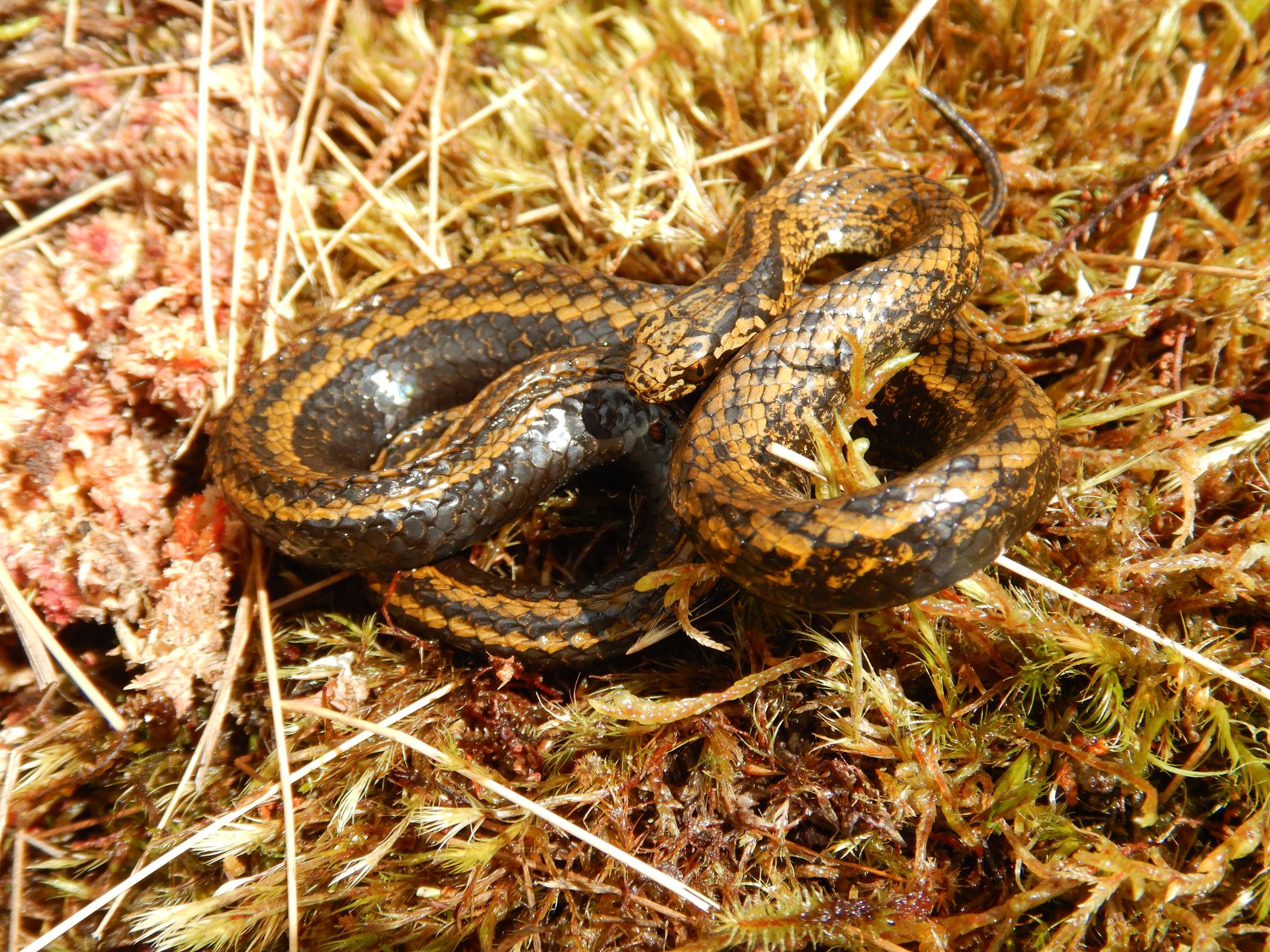August 15, 2023

OTISHI NATIONAL PARK, Peru (August 15, 2023) – A new species of snake, discovered high in the Andes mountains in Peru, has been named for environmental advocate and vice chair of Conservation International, Harrison Ford. Details about the snake, it’s discovery and it’s naming were published today in the scientific journal Salamandra.
The species (Tachymenoides harrisonfordi) is a type of Slender Snake measuring 16 inches long. Researchers from Peru and the U.S. discovered the animal – one male snake – in May 2022, sun-basking in a swamp within the Otishi National Park area in Peru’s Andes. Its habitat is located more than two miles in elevation (10,656 feet) in the park’s mountain grasslands, known as the Central Andean Puna.
The snake is pale yellowish-brown with scattered black blotches, a black belly a vertical streak over his copper-colored eye, making it well-camouflaged to the surrounding environment.
Researchers said they named the new species in honor of Ford in recognition of his decades-long environmental advocacy through his role with Conservation International and for always speaking up for nature and people, whether on the world stage or as “The Ocean" in the Nature is Speaking campaign.
“These scientists keep naming critters after me, but it’s always the ones that terrify children. I don’t understand. I spend my free time cross-stitching. I sing lullabies to my basil plants, so they won’t fear the night,” said Ford. “In all seriousness, this discovery is humbling. It’s a reminder that there’s still so much to learn about our wild world — and that humans are one small part of an impossibly vast biosphere. On this planet, all fates are intertwined, and right now, one million species are teetering on the edge of oblivion. We have an existential mandate to mend our broken relationship with nature and protect the places that sustain life.”
The discovery of Harrison Ford’s Slender Snake is notable for the area – one of Peru’s least explored. The combination of the Park’s remote location high in the Andes, limited mostly to helicopter access, and illegal trade across the region makes scientific expeditions more difficult. Yet biodiversity research on reptile species is increasingly important. Last year, Conservation International experts published a landmark study that found one fifth of the world’s reptiles are threatened with extinction.
“Too often, reptile conservation can be overlooked – most people likely don’t find snakes as cute as a fluffy panda cub, but their role in the world’s ecosystems is just as important,” said Neil Cox, manager of the Conservation International-IUCN Biodiversity Assessment Unit, who authored the 2022 Global Reptile Assessment that found 21% of all reptile species are threatened with extinction. “This discovery helps us better understand how snake species exist and survive in the world, and I hope that its fun name will help draw attention to the threat of extinction facing reptiles globally.”
“For a biologist, describing a new species and making it public with its new name is one of the most vital activities during the biodiversity crisis. I am honored that Mr. Ford accepted our dedication,” said Edgar Lehr, professor of biology at Illinois Wesleyan University. “We hope the new snake will create awareness about the importance of biological fieldwork that intends to discover the unknown – often an adventurous and expensive process requiring more financial support from funding agencies. Only organisms that are known can be protected.”
This is the third animal species named for Harrison Ford – he has also inspired the name of an ant (Pheidole harrisonfordi) and a spider (Calponia harrisonfordi). Harrison Ford’s Slender Snake is his first reptile namesake.
###
About Conservation International: Conservation International protects nature for the benefit of humanity. Through science, policy, fieldwork and finance, we spotlight and secure the most important places in nature for the climate, for biodiversity and for people. With offices in 30 countries and projects in more than 100 countries, Conservation International partners with governments, companies, civil society, Indigenous peoples and local communities to help people and nature thrive together. Go to Conservation.org for more, and follow our work on Conservation News, Facebook, Twitter, TikTok, Instagram and YouTube.